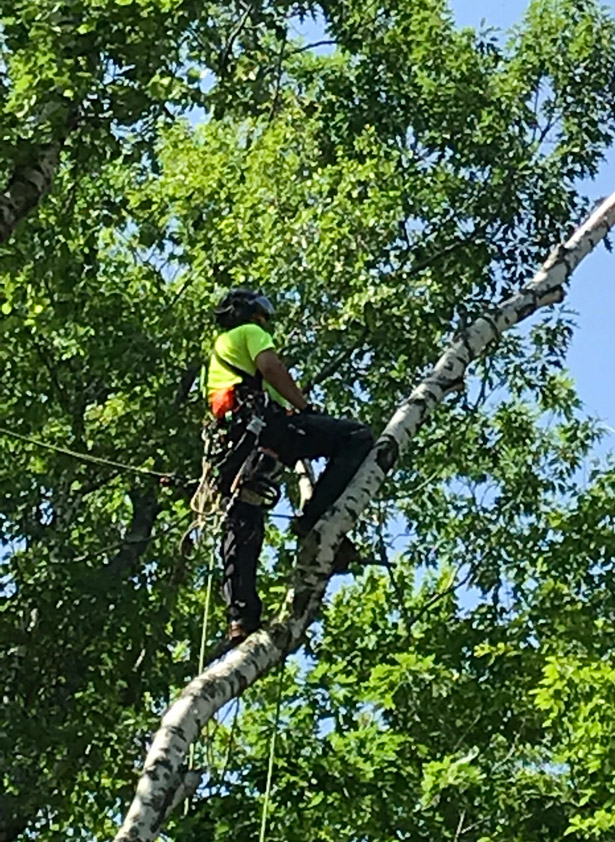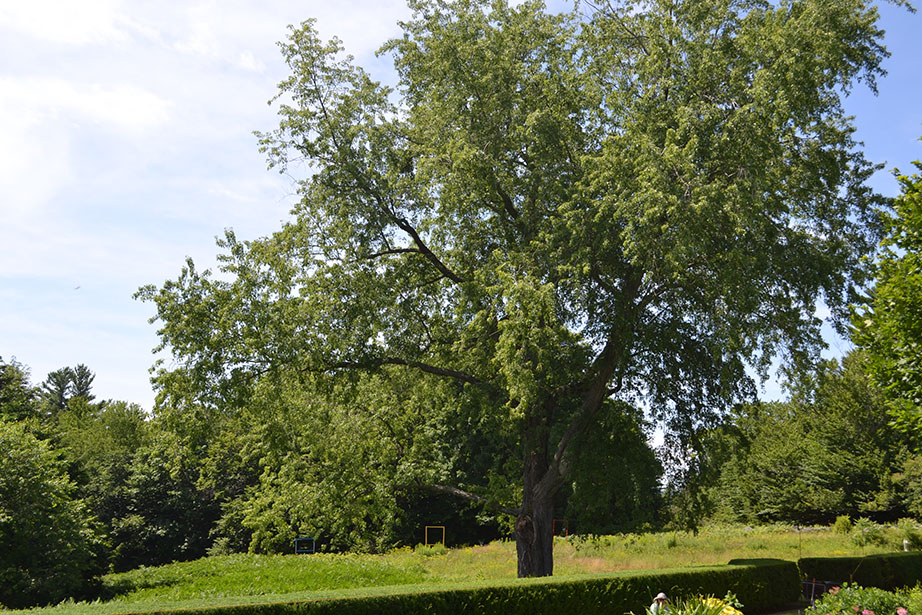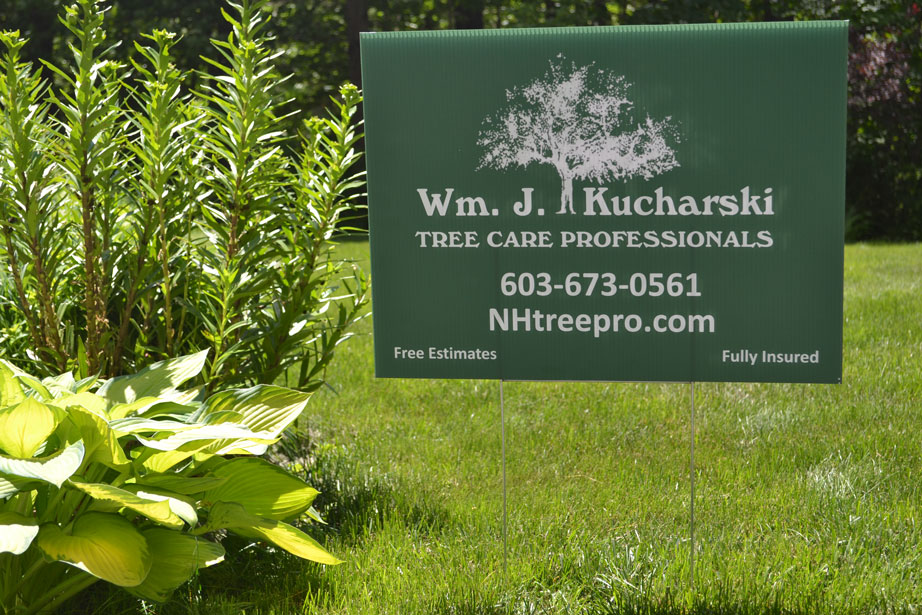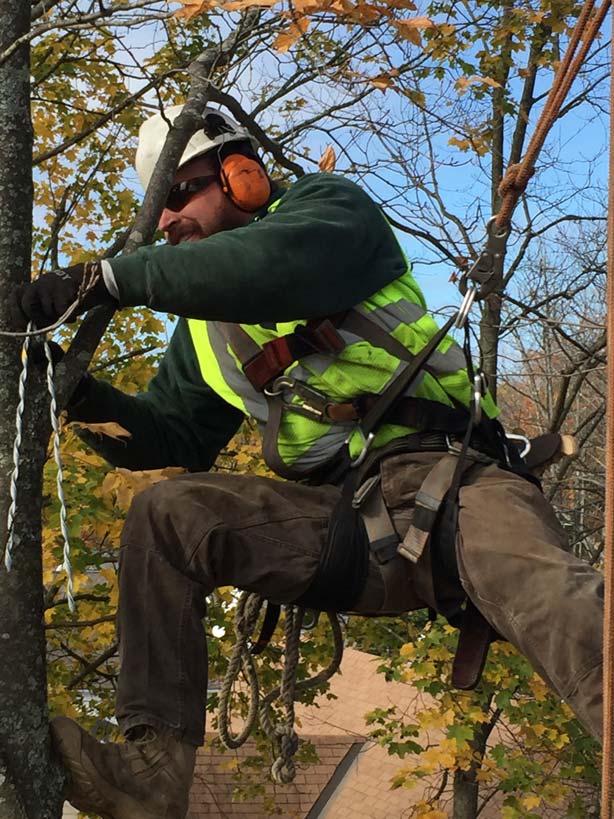Caring for your trees is a gift from you to future generations!


Our work is performed in accordance with the American National Standards Institute (ANSI) A300 standards. Kucharski Tree offers many types of pruning services, including shaping, hazard pruning, fine pruning, vista enhancement, crown cleaning, crown thinning, and crown reduction. Call us today for the best tree management practices available!
Shaping
Shaping is pruning to encourage aesthetics of focal plants and the growth of trees. Be sure to hire a trained arborist when timing your pruning. As a general rule, growth is maximized if pruning is done before bud swell, in early spring. Pruning when trees are dormant can reduce pest issues associated with wounds caused by pruning cuts. Dormant pruning also allows the tree to take advantage of the full growing season to begin compartmentalizing wounds.
006837
Hazard Pruning
Hazard pruning is the removal of weakly attached, dead (2" diameter or greater), and any hanging limbs to prevent injury or damage to persons or property.
Vista Enhancement
In most cases, tree pruning is of a corrective or preventative nature. There are times, however, when a client wishes to improve a view from a predetermined point. Vista enhancement is the removing, pruning, and thinning of selected trees to enhance view.
Crown Cleaning
Crown cleaning is the selective removal of dead (1" diameter or greater), diseased, broken, or weakly attached branches from the tree crown. Regular pruning should correct small growth problems, such as crossing or rubbing limbs, before they have a chance to become larger, and often more expensive, issues.
Crown Thinning
Crown thinning includes crown cleaning as well as selective removal of branches to increase light penetration and air movement through the crown. Increased light and air stimulates and maintains interior foliage. The removal of selected interior branches also reduces weight, which may prevent mechanical failures in later years.
Fine Pruning
Fine pruning includes Crown Thinning and any dead limbs of 1/2" diameter and over.
Crown Reduction
Crown reduction pruning is used to reduce the size of a tree. We do not advocate topping, or the arbitrary cutting of limbs to a stub or branch that is not large enough to assume the terminal role. Every cut we make is done for a reason, and we're sure to prune limbs back to lateral branches capable of assuming apical dominance. Call us today. Our staff is trained on proper pruning techniques!
Tree Removal

Oftentimes, trees are either too big, located in awkard positions on the property, or in close proximity to targets, to fell easily. In these cases, removal can become a technical process. That's where a professionally equipped and well-trained service provider like Kucharski Tree Care comes into play.
Our equipment includes a 60 foot bucket truck, log truck, chippers, and crane service. For trees located in areas not accessible by heavy equipment, our experienced climbers use the latest rigging techniques to safely and effectively accomplish the job.
Removing the tree is not when our work is over, though. Kucharski Tree's team understands that no client likes a mess on his property. We recognize that the removal of debris and thorough clean-up is paramount, and we make every effort to leave a job without anyone ever knowing we were there!
Tree Risk Assessment

Risk assessment in arboriculture is identifing potential tree failures. Call our ISA TRAQ credentialed arborists today and let us mitigate the hazards on your property. We will ensure your ongoing safety and the safety of your property.
When identifying defects, we consider the overall form and symmetry of the tree and any history of failure. Our team utilizes the best resources from the International Society of Arboriculture to properly inspect your landscape. If we identify any tree that is in imminent danger of failing, immediate action is taken onsite.
Planting | Transplanting

Our team selects high-quality plants and uses proper planting procedures to encourage the successful establishment of nursery stock in your landscape. Don't hire companies that just dig a hole. Our crew is trained in preparing proper planting sites for the successful establishment of root systems.
Fertilization

When nutrient-cycling is limited, fertilizing trees can increase growth and help to reduce insect infestations and certain diseases. Call us today and schedule a consultation!
Tree Cabling | Rod Bracing

Trees not only grow in height, but also in girth. Often, trees produce co-dominant limbs, causing a narrow crotch, or sharp apex, where the limbs attach to the parent stem. As each limb continues to grow, it may form "included bark" at the attachment site. This is a structural weakness and can cause the limb to break, making the tree susceptible to insect infestation and disease, or cause potential damage to persons or property. Depending on the tree, one of the co-dominant stems may be removed. The complete removal of a co-dominant stem may not be necessary in every case.
The installation of cables and bracing rods, along with pruning to reduce end-weight, can reduce the likelihood of structural failure. Properly installed cables help prevent tree failures, and bracing rods can provide support to weak branch attachments. Cabling and bracing can increase the longevity of your trees. Call today to have our specialists examine your trees and determine if cabling and bracing may be beneficial. If your trees contain existing cables, our specialists can examine them to confirm proper placement and hardware!